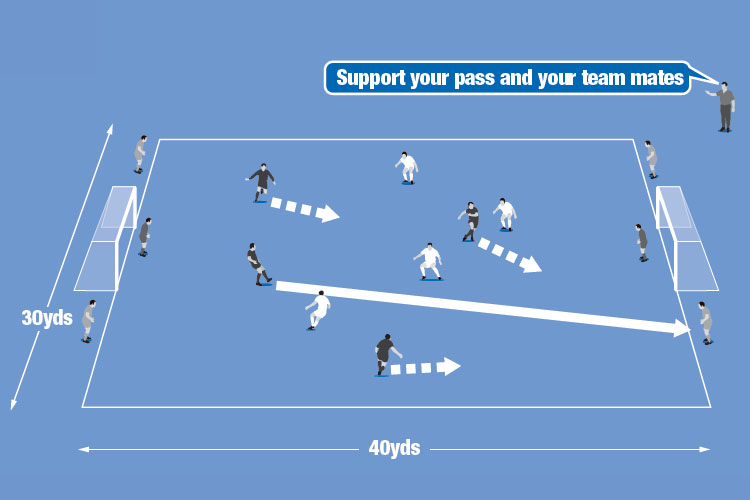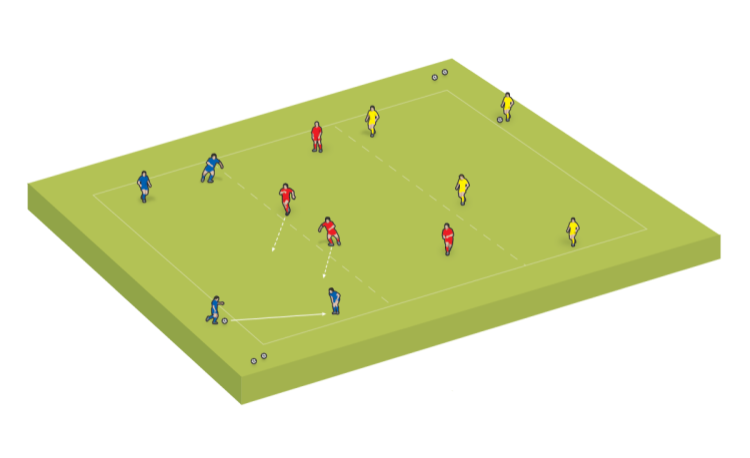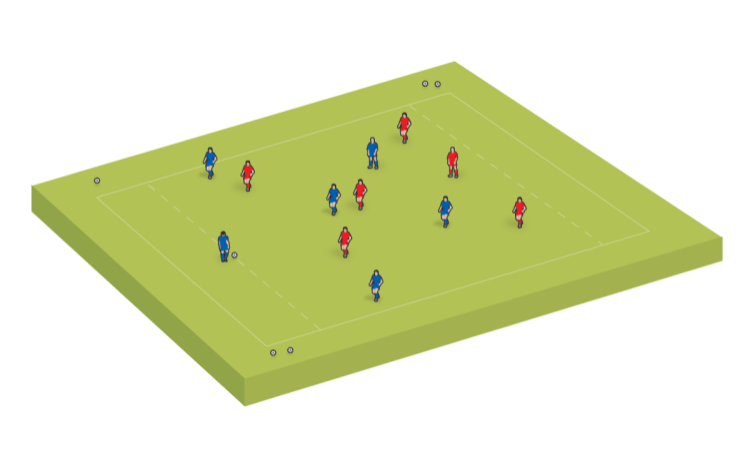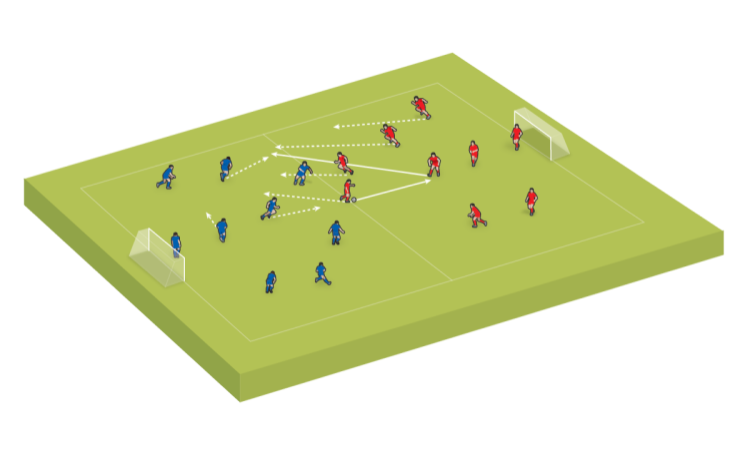Set up shots to find the net
In matches, forwards often have to play with their backs to goal. This will allow defenders and midfielders to make positive forward passes into attacking areas of the pitch and support those passes with good runs. Then they can expect accurate set-ups by forwards to shoot.
What this session is about
- Playing with your back to goal.
- Setting the ball.
- Playing forward passes.
What to think about
Defenders are taught to slow down opposition attacks by forcing them back and away from goal. So, as your team attacks, your players need to try and ensure this does not happen to them by keeping the ball moving quickly and preventing the opponent’s defence from settling.
When an attacker receives a pass with his back to goal, he must ensure he is not guilty of slowing down the momentum. The temptation is to hold the defender from the ball by a show of strength and then skill to turn. However, during this process, he may be helping the opposition to recover their defensive positions. Your players must try to set the ball quickly to a supporting player or perhaps make a second run into space or into the box for a cross?
Set-up
| Warm up | Session | Development | Game Situation | Warm Down |
|---|---|---|---|---|
| 10 minutes | 15 minutes | 15 minutes | 15 minutes | 5 minutes |
What you get your players to do
Mark out an area within a larger area and add a goal at each end. Also populate the inner area with cones, as shown in the top picture.
The first server (S1) passes to the midfielder (M1) who receives the ball and passes forward to the set-up player (SU1).
M1’s pass must miss the cones and then he runs forward to receive a set-up pass from SU1 in order to shoot at goal.
S1 now runs onto the field to take M1’s first position while SU1 is replaced by SU2.
Allow all players from the S1 queue to pass out, then be the midfielder before swapping the direction of play that allows the other team to shoot at the opposite goal.

Development
Use the same area to progress. Use two teams in the smaller area and two neutral forwards (N) that work outside the smaller pitch.
The aim is to pass forward to a neutral forward, who sets the ball first time for an attacker to break out of the area and shoot at goal.
If the neutral forward cannot set with one touch to a supporting midfielder, he must pass back into the pitch and to the opposing team who attack the other way.
This rule ensures players are quickly running forward to receive the set-up from the neutral forwards.
Related Files
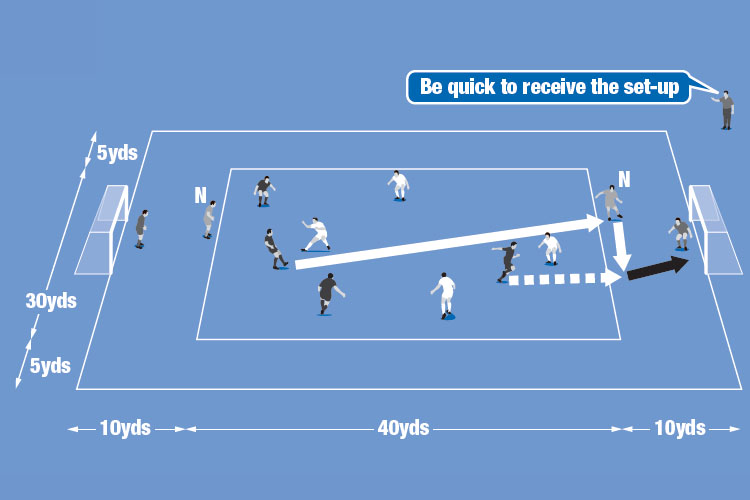
Game situation
You only need to use the inner area (with goals) for the game, which requires three teams.
One team works as target players (two players go either side of the goals, outside the pitch). Meanwhile, two teams play in the area.
To score, a team inside the area must pass a ball to a target player and run to receive a set-up then shoot at goal.
Target players are limited to one touch. The first team to score two goals wins and the losing team now rotates with the target players.
Newsletter Sign Up
Coaches Testimonials

Gerald Kearney, Downtown Las Vegas Soccer Club

Paul Butler, Florida, USA

Rick Shields, Springboro, USA

Tony Green, Pierrefonds Titans, Quebec, Canada
Subscribe Today
Discover the simple way to become a more effective, more successful soccer coach
In a recent survey 89% of subscribers said Soccer Coach Weekly makes them more confident, 91% said Soccer Coach Weekly makes them a more effective coach and 93% said Soccer Coach Weekly makes them more inspired.
*includes 3 coaching manuals
Get Weekly Inspiration
All the latest techniques and approaches
Soccer Coach Weekly offers proven and easy to use soccer drills, coaching sessions, practice plans, small-sided games, warm-ups, training tips and advice.
We've been at the cutting edge of soccer coaching since we launched in 2007, creating resources for the grassroots youth coach, following best practice from around the world and insights from the professional game.
